It’s no secret that ever since the Big East dissolved for football and the ‘P5’ system rose to power, college football conferences have been fairly lackluster.
Louisville, Pitt, and Syracuse left to join the ACC, Rutgers joined the Big Ten (for some absurd reason), and the Big 12 desperately reached across the country to pick up West Virginia. The remaining football programs formed the AAC with some of the other better schools from the Conference USA.
The problem remains that the current ‘Power 5’ conferences of the SEC, Big Ten, ACC, PAC 12, and Big 12, are completely lopsided in terms of competition and number of members. This consistently results in a skewed and biased playoff system. So here is my solution to the problem, one final college football conference realignment.
Conference Realignment Format
Final College Football Conference Realignment
First off, let’s do the Big 12 a favor and put it out of its misery. Gone are the days of the dominant Big 12 with Oklahoma taking on Nebraska, Missouri, or Colorado. Gone are the days of a national contending Longhorn program facing off against long-time rival Texas A&M on Thanksgiving day.
The Big 12 is being held together by an Oklahoma shoestring and simultaneously torn apart by a failing Longhorn network. It needs to be broken apart and divvied up to conferences that control their respected regions.
Four Ultimate Division 1 Conferences
With only four Division 1 conferences, we would get an even number of conference champions, which would allow for a much smoother playoff selection process. If each conference was stacked with 18 teams, that would allow each team to focus on their division and offer their region’s best school to compete in the playoffs.
Since schools that compete outside of a P5 conference already don’t stand a chance to earn a spot in the current CFB playoffs, these four conferences would entirely makeup D1 college football. Any conferences remaining outside of the four – such as the Sun Belt, MAC, MWC, C-USA, and AAC – could compete for their own playoffs at a lower level. Because how can we currently consider these conferences D1 if they don’t even have a chance to compete for the championship?
Scheduling
Because each conference would be comprised of a whopping 18 teams, each school would focus almost entirely on competing solely in their 9-team division. However, because there would be so much potential for lost rivalries from this massive conference realignment, each team would be allowed 1 cross-division rivalry game as we as a non-conference rivalry game.
These 11-game seasons would manage to maintain rivalries that would have otherwise been lost from the conference realignment, while also removing cup-cake games against lower-level opponents in weaker conferences that would no longer be considered D1.
- Each team plays every team in their division.
- 1 cross-division conference rival.
- 1 non-conference rival.
Playoff System
With four D1 conferences, it’s about time we finally get the 8 team playoff system we deserve. This playoff system is composed entirely of division champions. To receiver a higher seed, you have to win your conference.
While this may upset some, claiming this wouldn’t necessarily include the best teams every year. This would however offer a definitive set of rules to earn your way into the playoffs, as well as put an emphasis on winning your division and conference.
That means no more “SEC bias” or awarding a spot to a school simply because of their fan base. I have included an example below of what this playoff system would potentially look like with these expanded conferences.
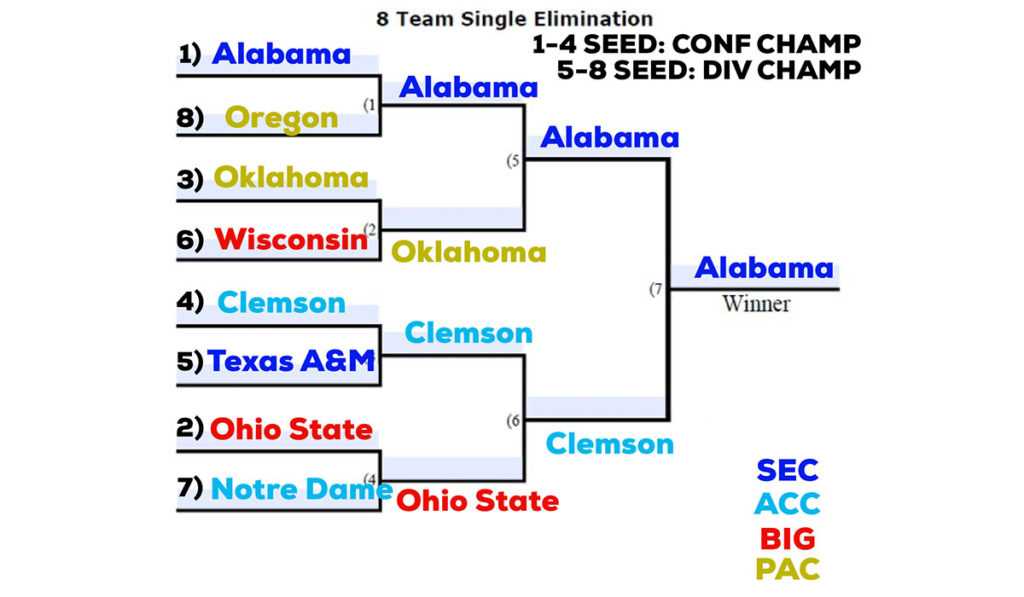
- 8 team playoff.
- Seeds 1-4 = conference champions.
- Seeds 5-8 = division champions.
- Each team plays against different conference opponents.
SEC Conference Realignment
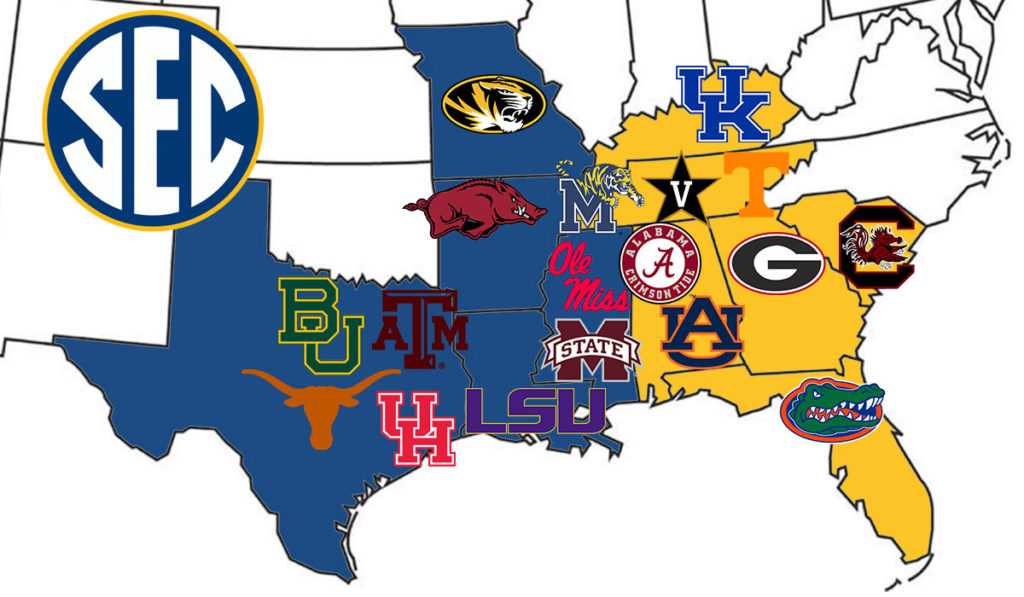
Hate it or love it, the SEC is currently the ideal conference. It’s regionally compact, includes plenty of members, and is stacked with competitive programs. That being said, with the expansion to 18 member conferences, the SEC would need to add 4 more schools.
To maintain the regional accuracy of the SEC, I chose to add 3 more schools from Texas and 1 more from Tennessee. These include Memphis, Baylor, Houston, and the University of Texas.
It should come as no surprise that the SEC would ideally migrate more into Texas during an expansion for the state’s TV markets and top-level recruits. While Baylor would help further the SEC reach into the state, the addition of UT (the Texas UT, that is) would be the obvious slam dunk in terms of money and revitalizing the A&M rivalry.
The surprising additions would be the rivals, Houston and Memphis. These two would further solidify the conference’s regional dominance as well as tap into large TV markets with top-level recruits. Not to mention, these programs have been competing at a high level for a long time and would likely step-up to the increased level of competition as well as re-spark some old rivalries.
SEC EAST
- Florida
- Georgia
- South Carolina
- Tennessee
- Vanderbilt
- Kentucky
- Auburn
- Alabama
- Memphis+
SEC WEST
- Mississippi State
- Ole Miss
- LSU
- Arkansas
- Missouri
- Texas A&M
- Texas+
- Baylor+
- Houston+
PAC Conference Realignment
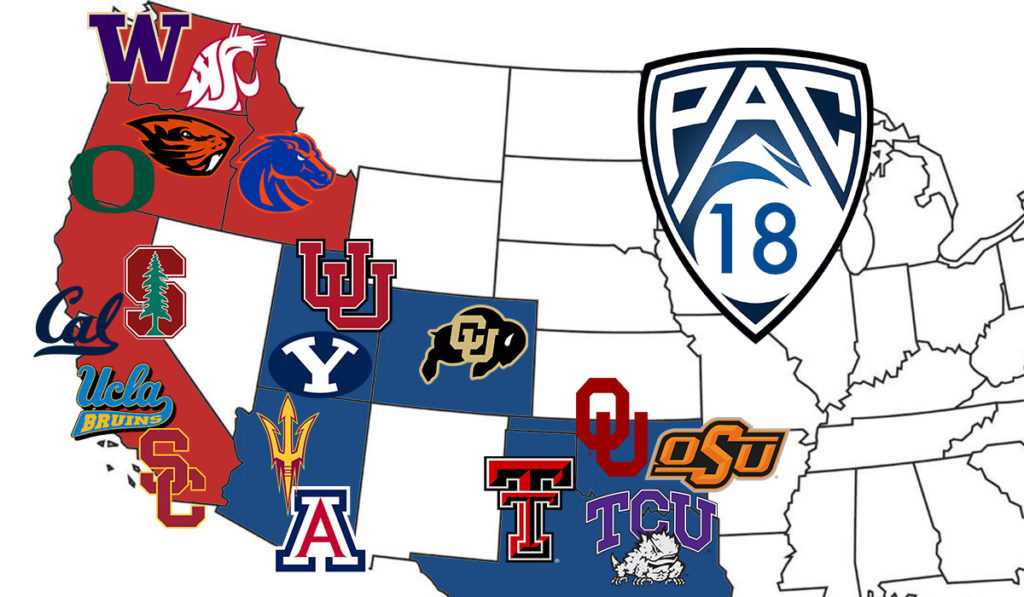
It should come as no surprise that the PAC 12 is in need of some serious work. Thankfully, the possibility to pick off competitive schools from the Big 12 would be just the assistance this conference would need to regain some respect.
To reach the 18 team limit, the PAC would need to add a whopping 6 more schools. While the PAC essentially already dominates their region in terms of high-level competition, moving east into Texas and Oklahoma would give the PAC exactly what they are looking for.
With the addition of Texas Tech, TCU, Oklahoma, and Oklahoma State from the Big 12, the PAC would not only expand their reach for quality recruits but more importantly, expand their time zone to include some more realistic TV times for fans that aren’t located on the west coast.
While the addition of BYU and Boise State seem obvious, the PAC landing Oklahoma might come as a surprise. The fact is, OU is a blue-blood program that would offer a nice balance to this conference’s west coast USC, Oregon, and Washington programs. Not to mention, to my understanding, there is some sort of Oklahoma state law emplace that requires OSU to remain in the same conference as OU.
PAC EAST
- Arizona
- Arizona State
- Colorado
- Utah
- BYU+
- Texas Tech+
- TCU+
- Oklahoma +
- Oklahoma State+
PAC WEST
- UCLA
- Cal
- USC
- Stanford
- Oregon
- Oregon State
- Washington
- Washington State
- Boise State+
ACC Conference Realignment

Although the ACC has long been considered more of a basketball conference than football, the addition of Notre Dame, West Virginia, Navy, and UCF would likely give them more earned respect as a competitive football conference throughout.
As we have seen from this weird COVID season of college football, the addition of Notre Dame into ACC football has made the conference much more interested as they have gained a legitimate threat to Clemson’s usual dominance.
While Navy would likely be the weakest addition, it’s a competitive program that is in the ACC region and would likely improve with the additional competition level. West Virginia however seems like an addition to the ACC that should have happened when they left the Big East for the Big 12; a conference they simply don’t belong in.
UCF is the addition that would be most interesting, however. UCF is a school that has been trying to earn their seat at the table for years but seem to never be given the chance. With the resources from joining a conference like the ACC, could UCF finally prove they are a top-level college football program?
ACC NORTH
- Boston College
- Syracuse
- Pitt
- Louisville
- Virginia
- Virginia Tech
- Notre Dame+
- West Virginia+
- Navy+
ACC SOUTH
- Miami
- Florida State
- Georgia Tech
- Clemson
- Wake Forest
- UNC
- Duke
- NC State
- UCF+
Big Ten Conference Realignment
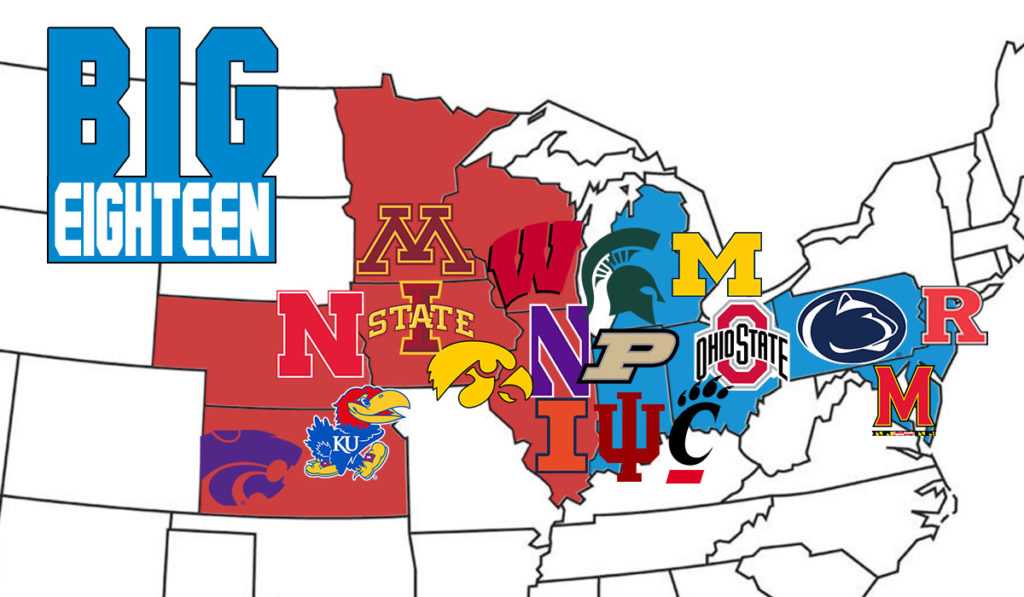
Like the SEC, the Big Ten is a regionally dominant blue-blood-filled conference with schools like Ohio State, Michigan, Wisconsin, Penn State, and Nebraska. That being said, the Big Ten is also like the Big 12 in the fact that it’s inaccurately named. To resolve this issue, I have simply renamed the conference, the Big Eighteen. Not very clever, I know, but maybe their marketing department can work on that.
With the enviable death of the Big 12, it seems that the time has finally come to add Kansas, Kansas State, and Iowa State to this conference, so they can finally join their cornfield brethren where they belong. Let’s be honest, those schools deserve to be in a division with Nebraska, Minnesota, Iowa, and Wisconsin so they can talk about their favorite ‘pop’ and who has more cows in their state.
The wild-horse addition to this conference would be Cincinnati. Although I’m sure Ohio State fans wouldn’t be too eager to have to share the state, I think if states like Michigan, Illinois, and Indiana are able to be represented by two schools, Ohio surely can as well.
Not to mention, Cincinnati has been consistently competitive at a high-level for long enough to earn their way into this expansion of Division 1 conferences.
BIG EIGHTEEN EAST
- Rutgers
- Penn State
- Maryland
- Ohio State
- Michigan
- Michigan State
- Purdue
- Indiana
- Cincinnati+
BIG EIGHTEEN WEST
- Nebraska
- Minnesota
- Iowa
- Wisconsin
- Northwestern
- Illinois
- Kansas+
- Kansas State+
- Iowa State+
So there you have it, my final college football conference realignment plan. I think this solution would trim the fat of college football as well as streamline the playoff system by removing the possibility for school or conference bias.
There are surely enough parts of this plan that will be inevitably picked apart by nearly everyone who reads it, and I’m sure there is even a mistake or two I made, but I’m pretty satisfied with this idea as a whole. And if you disagree with the whole thing, then I hope I successfully wasted your time.


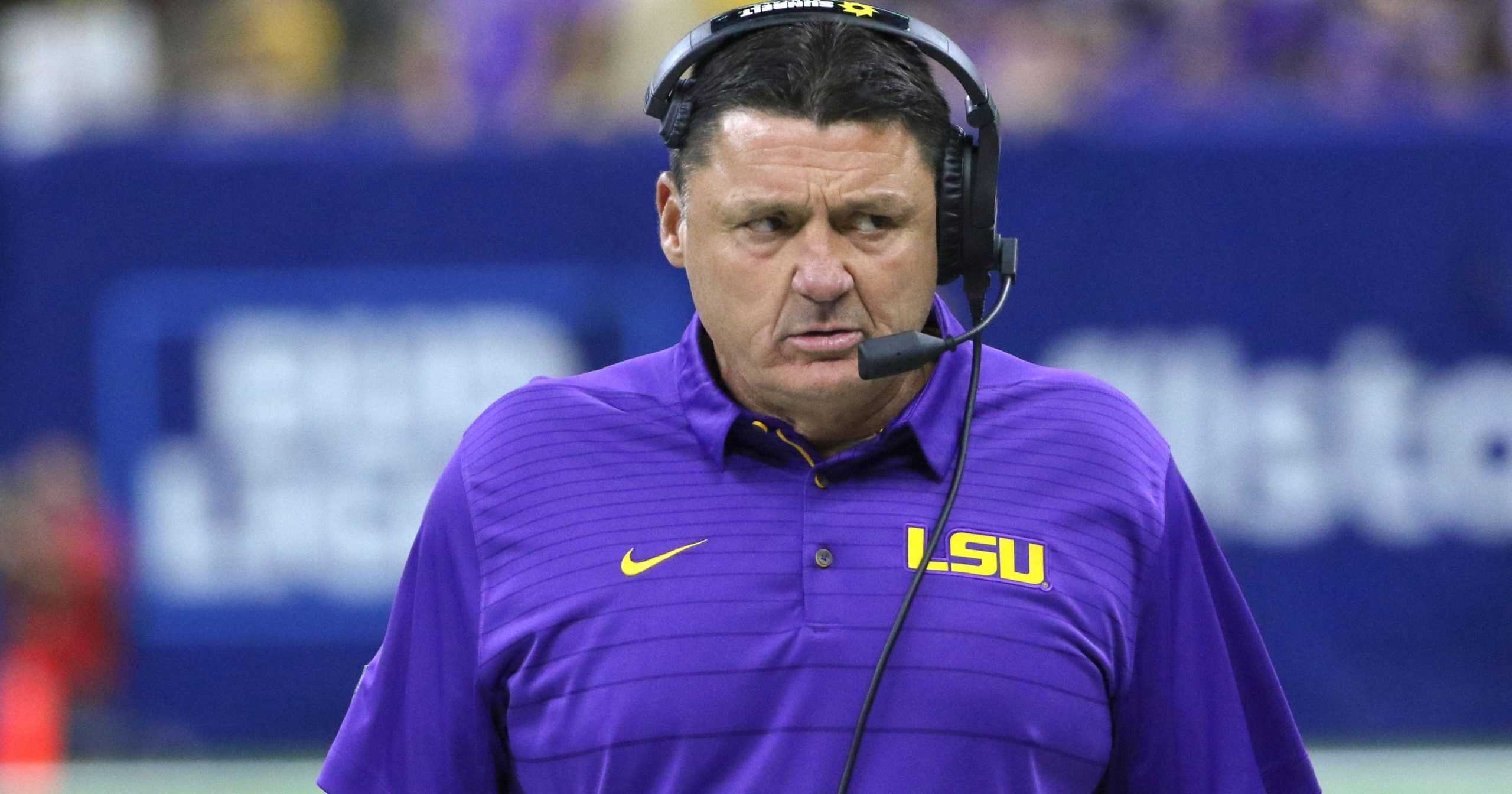




3 Comments
The Big 12 owns the naming rights to Big 14/16/18…through Big 20 something, so there’s that. Considering the buyers remorse at Nebraska and Arkansas, along with rumors of an exodus in the PAC (Arizona, Arizona, State, Utah, and Colorado, and at least 1 school in California), the B12 is poised to gain the most in the next round of expansion/realignment. Additionally, Big 12 fans and powers that be have warmed up to inviting BYU, a school with it’s own network. In the event that all California based members of the PAC remain, the B12 could invite a “filler” school (Tulane, Rice, UH, or SMU) to round out an 18 team conference. Assuming the PAC wishes to remain a P5 conference, they would need to invite current MWC/AAC/C-USA members (I think Colorado State, Hawaii, and Boise St would be logical). Ultimately, the Big 12 has the most to gain in the next round of expansion/realignment. Either way, I don’t think the P5 model leaves any time soon. For this reason, it’s more likely than not that we see an expanded 8-16 team playoff before a P4 model.
“While this may upset some, claiming this wouldn’t necessarily include the best teams every year. This would however offer a definitive set of rules to earn your way into the playoffs…”
What??? No!!! If you’re going to blow it up and start over (which is fine by me), let’s NOT go with the rigid-mechanical-invariably-leaving-out-the-best-teams approach. After all, 100 years of this system is enough and it kinda seems that this would be one of the major reasons for a major realignment.
Say Alabama is #1 at 11-0, Auburn is #4 at 10-1 and Ole Miss is #15 at 8-3 but wins their division. Egads!
Or lets play it out to the (not entirely unlikely) extreme. Say Alabama, Auburn, Ohio St., Michigan, Clemson, Miami, Oregon and Washington are the best 8 teams in the country. Only 4 go to the playoffs?
Or even worse… Say the #1, #3, #4, #6, #9, #11, #15 and #18 best teams in the country are the division winners. So we have an 8 team playoff without the 2nd, 5th, 7th and 8th best teams in the country?
No thanks.
If we went with a playoff system we would not rank teams in polls by sportswriters. Remember, that is merely their opinion. If you choose to crown a champion by playoff system, you are by definition acknowledging that the team with the best regular season record or the team that many of the experts think is terrific, may not win. Remember when the Giants at 9-7, regular season and the Patriots 16-0 played in the Super Bowl. The Giants took the Lombardi Trophy but the Patriots were a much better team. A playoff begins at the conference level where champions are crowned and move on to play other champions. Sure there will be non-champion teams in a conference that you think are better than the champion from another conference, but so be it. Play it off on the field. No more rankings. The NFL does not use rankings. They play it off on the field. If you play it off on the field, best team doesn’t always get in or win. An alternative is to just go with a ranking/ratings system like we had pre-BCS and sportswriters rated the best teams. You could have 6 SEC teams in the Top 10. No concerns about some third-rate PAC-12 school winning their inferior conference and getting a shot at the championship.
Actually there is an alternative which would have an 8-team playoff based on 5 Power Five Conference Champs and 3 Wild Cards selected by committee. That would address your concern about the SEC having a plethora of great teams that don’t get into a playoff.